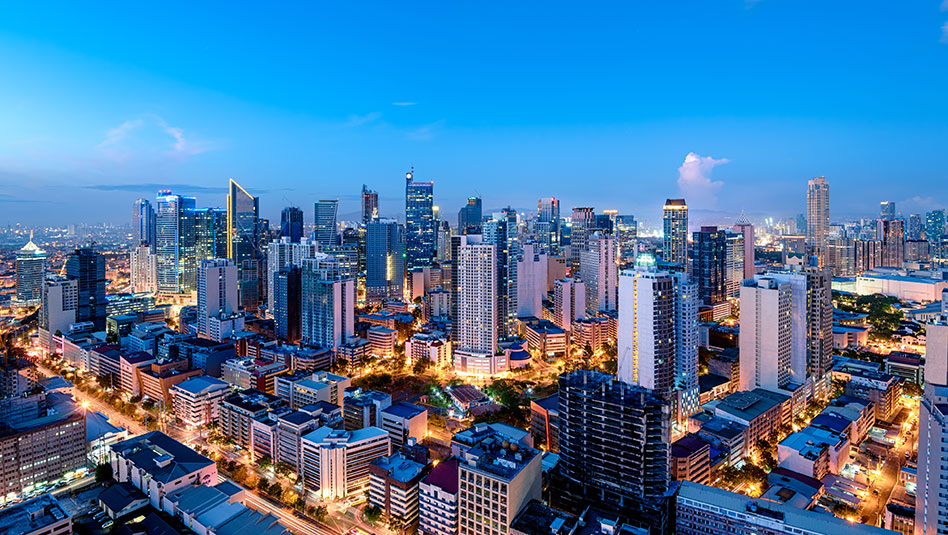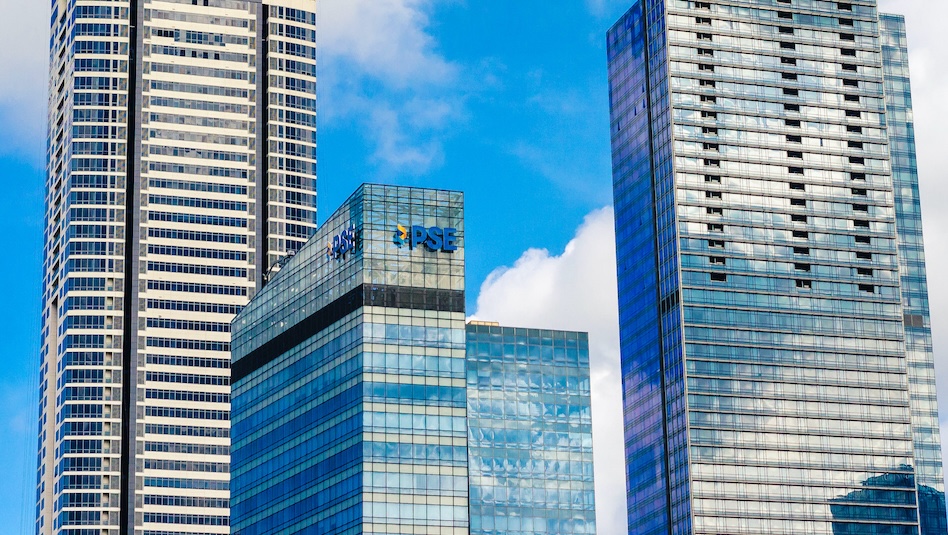




Quarterly Economic Growth Release: More BSP cuts to come
 DOWNLOAD
DOWNLOAD

Monthly Economic Update: Fed catches up
 DOWNLOAD
DOWNLOAD

Inflation Update: Steady and mellow
 DOWNLOAD
DOWNLOAD


Philippine capital markets need ‘bolder reforms’

Regulators should undertake “bolder reforms” to ensure that Philippine capital markets can attract more investments and boost trading activity, analysts said.
The Philippine stock market remains “relatively small” compared with regional peers despite strong economic growth in the last decade, according to the Organisation for Economic Co-operation and Development (OECD) in its capital market review of the Philippines.
“Bolder reforms are needed if we wish to significantly boost the stock market,” China Bank Capital Corp. Managing Director Juan Paolo E. Colet said in a Viber message.
On the last day of trading on Dec. 27, the benchmark Philippine Stock Exchange index (PSEi) closed at 6,528.79, up by 1.2% from its 6,450.04 finish at the end of 2023. This marked the first time that the main index closed higher year on year since 2019. The PSEi returned to the 7,000 level in September after over 19 months but has since fallen.
To boost the market, Mr. Colet said regulators should provide tax incentives to listed firms that meet a certain public float, daily trading and value metrics.
Mr. Colet said public offering and listing regulations could be liberalized, while tightening tender offer and delisting rules.
“We need reforms that make public equity markets more attractive in terms of tax and cost efficiency, ease of transactions, accessibility, relevant products, and minority protections,” Mr. Colet said.
He also urged regulators to penalize shell companies with no clear business plans.
He said Republic Act No. 9505 or the Personal Equity and Retirement Account (PERA) Act should be amended to increase the annual contribution limit and income tax credit for investments in listed stocks.
PERA is a voluntary saving program that complements retirement benefits from the state-led Social Security System and Government Service Insurance System.
‘Relatively small’
According to its report released in December, the OECD noted the Philippine stock market had 269 listed companies on the Main Board and SME Board with a total market capitalization of USD 234 billion at the start of 2024, which was equivalent to 52% of the country’s gross domestic product (GDP).
“Compared with peer countries, the Philippines has the lowest number of listed companies and ranks second to last in terms of market capitalization as a share of GDP,” it said.
Capital raised through IPOs and secondary public offerings are also lower than regional peers.
For instance, 95 Philippine companies have raised nearly USD 13 billion through IPOs since 2000, while in Vietnam, 584 companies raised USD 36 billion during the same period.
“Between 2000 and 2023, the capital raised through IPOs in the Philippines represented only 0.2% of GDP, much lower than in all other peer countries except Indonesia,” the OECD said.
This year, the PSE only had three IPOs — OceanaGold (Philippines), Inc., Citicore Renewable Energy Corp. and NexGen Energy Corp. For 2025, the PSE is aiming to have six IPOs and raise P120 billion in capital.
The OECD said public equity markets in the Philippines could be expanded, noting that there were about 400 non-financial companies with assets above P5.6 billion in 2021 that could have potentially gone public. It also noted that state-owned enterprises could also be encouraged to list on the stock exchange.
The OECD recommended that Main Board listing requirements be loosened to allow companies with high growth potential to be listed “even if they are currently not profitable.”
Regulators were also urged to commit to a three-month IPO approval process and possibly implement a single submission platform for applications. Also, regulators were urged to simplify the listing fee structure, introduce a maximum threshold on the initial listing fee and lower the stamp duty tax rate.
The OECD said a special program could be introduced to support the listing of large unlisted companies and large state-owned companies, which could boost the stock market’s attractiveness.
The OECD also recommended the introduction of more products and exchange-traded funds (ETF) to boost international investor interest.
It also noted that the bond market could become another source of financing for corporations through streamlined registration processes and improved transparency by local credit rating companies.
“To boost household participation, the government should seek to facilitate access to low-cost and easy-onboarding digital platforms that allow small minimum investments,” it said.
Planned reforms
Meanwhile, the PSE and the Securities and Exchange Commission (SEC) are undertaking some reforms that aim to stimulate market activity, such as the global Philippine depositary receipts (GPDR) in the first quarter of 2025, and derivatives by the first quarter of 2026.
The SEC is also mulling the development of a futures market to expand options for investors.
The PSE is also pushing Congress to approve the proposed Capital Markets Efficiency Promotion Act, which seeks to lower trading costs and woo more investors. One of its provisions will reduce the stock transaction tax to 0.1% from 0.6% on the sale of shares of stock listed and traded through the PSE, which will boost liquidity in the local stock market.
The Philippine stock market continues to lag its regional neighbors, with daily trading volumes significantly lower than in Indonesia and Thailand.
“Lowering the stock transaction tax from 0.6% to 0.1% is a good step as it can improve investor returns, trading volumes and bid-ask spreads,” Mr. Colet said.
“Market participants are also anticipating the introduction of derivatives, which can amplify our market’s appeal to sophisticated investors looking for risk management products and yield enhancement strategies,” he added.
AP Securities, Inc. Research head Alfred Benjamin R. Garcia called for further investor education on upcoming market products such as the GPDR and derivatives.
“We hope they would make more of an effort to educate investors directly, rather than educating the brokers and expecting them to pass on the knowledge to the clients like what we saw with the launch of real estate investment trusts (REIT),” he said in a Viber message.
Mr. Garcia said upcoming products such as futures and derivatives cater to corporates looking to hedge and manage their risks, as well as institutional investors.
“I don’t think futures and derivatives would gain much traction with retail investors, except for the more sophisticated ones,” he said.
Luna Securities, Inc. Research Officer and Market Strategist Annika Gabrielle S. Angeles said in an e-mail that efforts should be made to expand investment options for Filipinos.
“SEC, PSE and its members should explore and allow partnerships with international firms to offer ETFs, cryptocurrencies, commodities and other globally accepted assets,” she said.
“With millions of Filipinos already trading international digital assets, integrating these into local platforms can tap into this growing market while providing convenience, regulatory oversight and wider investment opportunities,” she added.
Ms. Angeles added that a “proactive” Capital Market Development Council (CMDC) could sustain the growth of local capital markets. CMDC is a public-private sector body tasked to facilitate the development of Philippine capital markets.
“Initial priorities include streamlining listing and reporting requirements through automated tools, redefining material information and insider rules, and using advanced data analytics to enhance transparency and enforcement,” she said.
Ms. Angeles said the PSE should also lower its board lot in lieu of fractional trading to make investing more affordable and inclusive for Filipinos.
“Making P100 investable makes investing more affordable and inclusive, allowing more Filipinos to participate in the stock market and start to build wealth. This aligns with global trends where low-cost investment options and fractional trading has boosted retail participation and market liquidity as seen in markets like Indonesia and the US,” she said.
“With more offerings and easier access, increased local participation will naturally attract foreign investors, and create more dynamic and inclusive markets. Relaxing regulations and lowering barriers to entry will improve liquidity and the availability of funds for investment, driving higher turnover and trading velocity,” she added.
Rizal Commercial Banking Corp. Chief Economist Michael L. Ricafort said in a Viber message that the market’s upcoming products would help attract more local and foreign investors.
“The new initiatives will allow us to better align with international standards and global best practices… These will also help to better respond to the investment and hedging requirements of the local and global investors as part of further development of the local capital markets,” he added.
Challenges
Meanwhile, Mr. Colet said one of the biggest challenges to public equity markets is the growth of private capital markets.
“Companies that can otherwise list on a stock exchange are increasingly able to tap private equity firms, alternative investment funds and other institutions for liquidity without much regulatory burden,” he said.
“At the same time, many stock investors are concerned about the fairness of our domestic market, such as in situations where companies are able to lowball their delisting price or perceived insider and related party transactions are not properly policed,” he added.
Mr. Garcia said recently launched products such as short selling has yet to show demand due to strict requirements.
The PSE launched short selling in November 2023, five years after issuing the revised guidelines on the trading strategy.
“For the new products, we have seen before in short selling that our regulators tend to be too stringent on requirements, detering participation in the new products,” he said.
“Unless they can make GPDRs, futures and derivatives more accessible, we don’t think these new products would be attractive,” he added. – Revin Mikhael D. Ochave, Reporter
This article originally appeared on bworldonline.com





 By BusinessWorld
By BusinessWorld